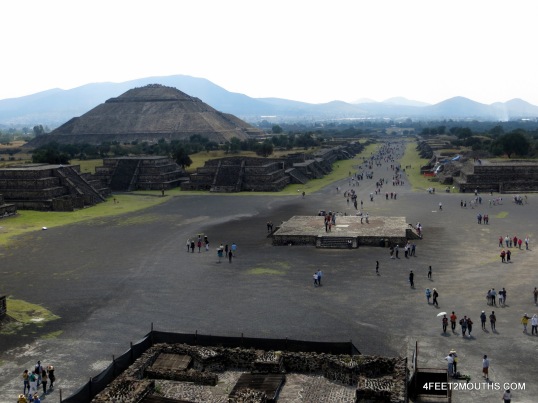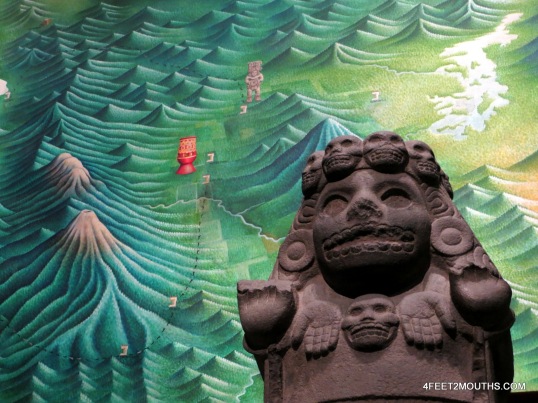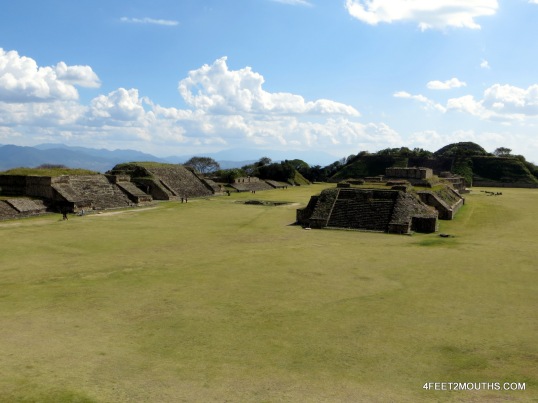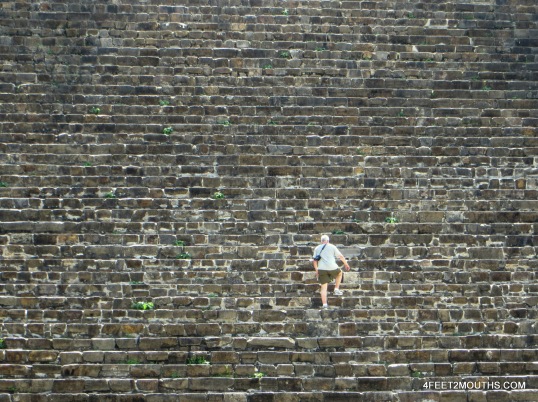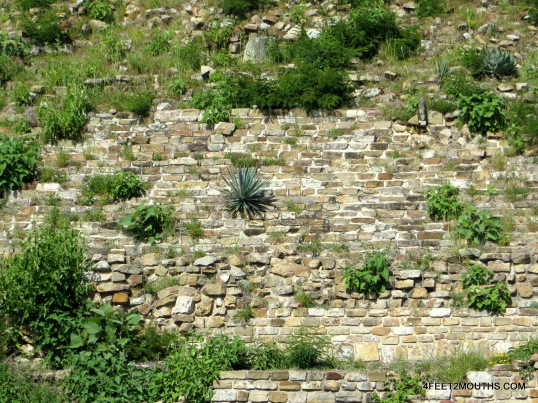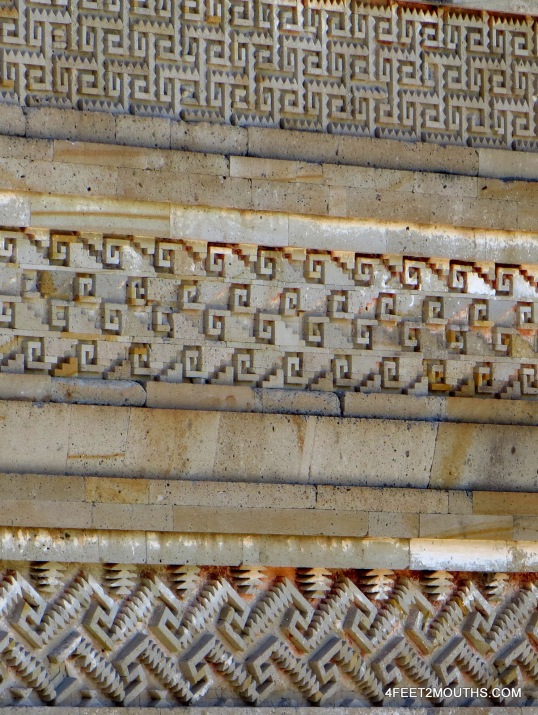Mexico’s past is so alive throughout the country it’s impossible to ignore it. I definitely came away from my trip with a deep appreciation for the various kingdoms that have controlled this land over the past few thousand years. Especially since the customs of the various ruling groups have morphed and transformed to be the mix of cultural and religious traditions that exist today. We visited a variety of historical sites throughout our trip so I thought I’d collect them in a single post.
The first was Teotihuacan just outside Mexico City. The giant pyramids of the sun and moons are carefully placed along a broad, straight axis surrounded by smaller pyramids and temples. They really are huge – the Pyramid of the Sun is the third largest in the world (right after Ginza in Egypt). The structures of Teotihuacan were built many centuries before the Spanish arrived. In fact, by the time the Aztecs were in power they did not even know who had built the pyramids; they were assumed to be the work of the gods.
When the Spanish did arrive, the Aztecs ruled over much of Mexico and Tenochtitlan was their capital. Today we know it as Mexico City. To imagine that a urban area built in a lake, similar to Venice, could metamorphisize to the megacity that DF is today is incredible.
Death was a major part of the culture and skull carvings were prevalent. These centuries old carvings are practically identical to the modern Day of the Dead motif celebrated throughout Mexico in the first days of November. Nathan and I couldn’t resist dressing up in this beautifully morbid style to walk around on Halloween last fall.
To the south of Mexico City, just outside Oaxaca, Monte Alban was built almost 2000 years ago on a mountain top overlooking the Oaxaca valley. Like Teotihuacan, the form is dominated by large pyramids arranged in and around a very flat, linear plaza. It was practically rock climbing to get up the steep stairs with the sun beating down our backs. But the views were worth it.
While Monte Alban was a political center, nearby Mitla was built around 1300s as an important religious site. Geometric carvings and some original paintings still cover the site, much of it unrestored. It truly felt like stepping back in time, through short, squat doorways to ancient courtyards. The geometry has a deeper meaning than just decoration. Each design symbolizes complex ideas, like the cycle of life or the watchful eye of God.
Mexico’s history is not only evident in crumbling ruins or city architecture, it’s also present in the food. While in Oaxaca, we made time to stop by Itanoni, a cafe that specializes in heirloom corn to make its tortillas, tamales and sopes. As in the United States, GMO corn has come to dominate Mexican fields. I loved seeing the ancient corn strains being treasured in its native land.
This was really just the tip of the iceberg. So many different great civilization have passed over this land, all of which have influenced the multitude of ethnic cultures coexist in Mexico today. It’s a diversity that makes me want to come back for more.
Filed under: Latin America, Mexico Tagged: Mexico City (DF), Ruins, Travel
